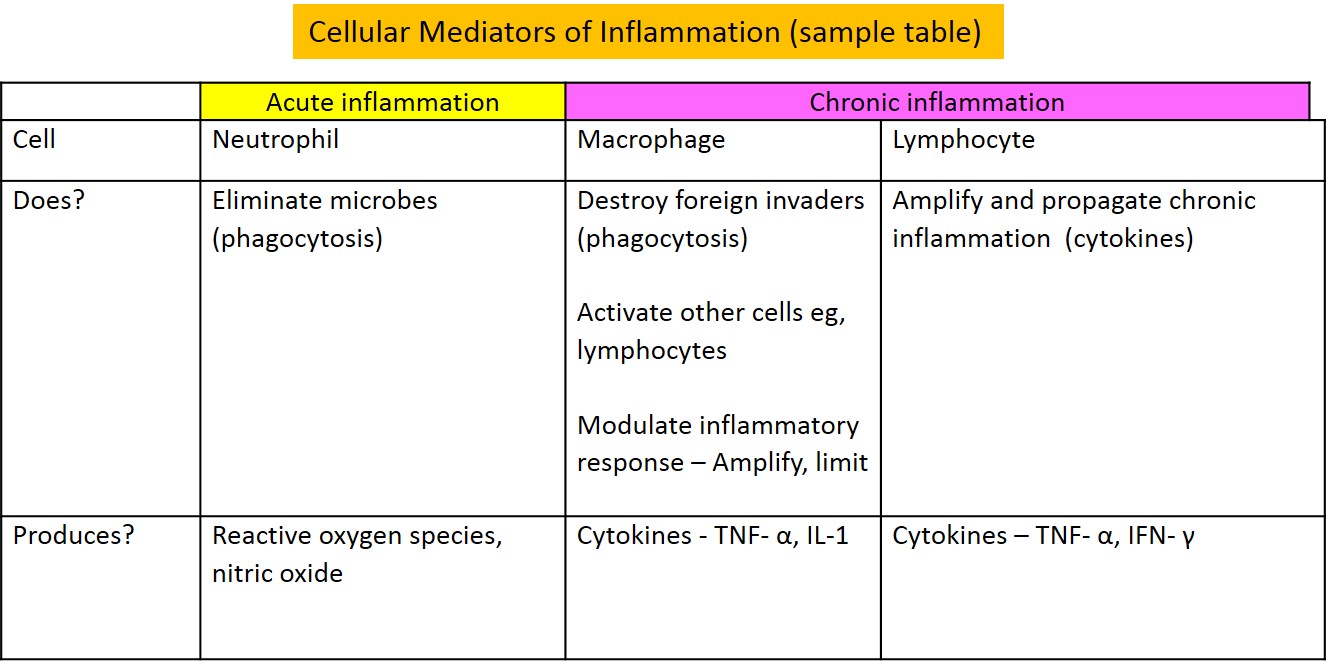The answer is: Mediators of inflammation
There are 2 main types of mediators:
1. Cells – neutrophils and macrophages; endothelial cells; and other leukocytes (platelets, mast cells, basophils)
Tip: Create a table or mindmap for cellular players – What they are, main actions, main products. This is the beginning of a sample table. Fill it up!
2. Chemical mediators
4 main types:
- Arachidonic acid metabolites
- Cytokines
- Vasoactive amines
- Kinins
Sources:
- From cells (cell-derived) – endothelial cells, leukocytes, platelets
- Pre-made (eg. histamine – vasoactive amine)
- Newly synthesised (eg. prostaglandins, cytokines) – some anti-inflammatory drugs (e.g. steroids, COX inhibitors) work on these pathways to curb the inflammatory response (Robbins has a great diagram on this)
- From plasma – bradykinin, complement, clotting system proteins
This is a broad overview. With this is mind, it will be easier to remember the main mediators, where they come from, and what they do.
Their effects are also easy to recall if you know the main events (outlined above in section IV).
You can also figure out why abnormal leukocyte function or numbers results in susceptibility to infections.
Here is a “sample’ table for the cell-derived mediators. Fill this up, and create one for plasma-derived mediators.
EARLIER PAGES:
UP AHEAD:
.

